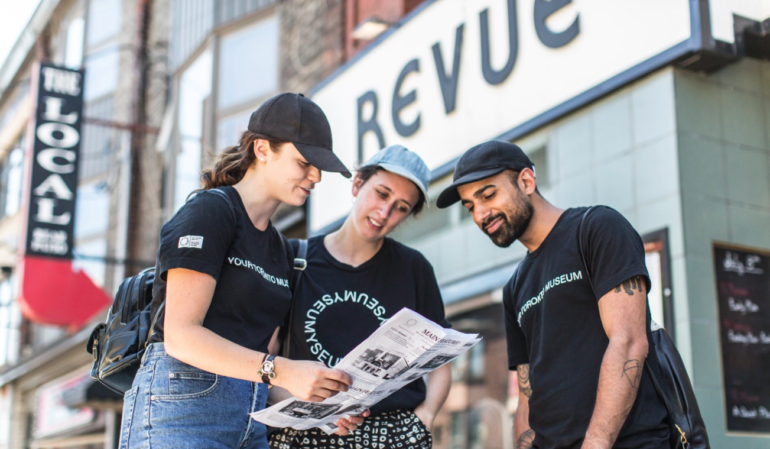
The Myseum of Toronto are hosting walking tours to highlight the history of Toronto’s Ward neighbourhood and the women who played key roles in its development. (Myseum of Toronto)
Olivia Levesque
The history of one of Toronto’s most well-known neighbourhoods is set to be uncovered in a walking tour hosted by Myseum of Toronto this weekend by focusing on some of the women who transformed it .
Women of the Ward is the latest in a series of summer programming by Myseum of Toronto. Starting at the Church of Holy Trinity in Trinity Square, the Ward — originally known as St. John’s Ward — is a neighbourhood highlighted on the tour as Toronto’s first immigrant neighbourhood. The Ward was bounded by Yonge Street and University Avenue, and College and Queen Streets. It was marked by its poverty and its diversity.
“This neighbourhood existed in the mid-19th century till the early 20th century, which is really Toronto’s first immigrant neighbourhood and mosaic type of society,” said Josh Dyer, the marketing director at Myseum of Toronto.
The stories being told on Sunday’s tour are drawn from the communities’ diverse past, focusing on the voices of four women who played a key role in Toronto’s history.
Jean Lumb is just one of the women being highlighted on the tour. She was the owner of a Chinese restaurant and helped to bridge the Chinese community with various politicians and Torontonians, ultimately breaking barriers by sharing her culture.
“She actually taught former Prime Minster John Diefenbaker how to use chopsticks as part of a campaign to repeal the Chinese exclusion act,” Dyer said.
Jean Lumb and the Kwong Chow restaurant, The Ward, 1967.
On July 22 & 29 join us for Myseum on the Move: Women of The Ward, a walking tour led by @JohnLorinc/@tatumataylor with performances by @magicalmudge @maYgn @coleenmacpher & Ali Joy Richardson.https://t.co/bfB7iNzJaU pic.twitter.com/tmT8QORIep
— MYSEUM OF TORONTO (@myseumTO) July 16, 2018
Another woman highlighted on the tour is Baltimore-born Jewish activist, Elizabeth Neufeld. She established Canada’s first settlement agency called Central Neighbourhood House.
The agency was at 84 Gerrard Street, just steps away from modern Bay Street, where the walking tour will pass by. The agency was a pillar in the Ward neighbourhood as it had no religious affiliations, making it easy for the diverse immigrant community to access services. Neufeld held programs and clubs at the agency ranging from boxing to sewing.
The two women will be portrayed among others in a way that is unconventional in comparison to the average historical talking tour.
“Through this walking tour there will be theatrical presentations, preformed by actors who are presenting reality and perspective of these four women,” Dyer said.
Dyer said he hopes participants of the tour walk away with a new appreciation for the city’s past and deep rooted culture.
“Look at the current historical narrative of Toronto, it is still quite deep in the British colonial legacy, but it’s a city that is one of the most multicultural in the world,” he said. “The tour looks at how these diverse communities has an impact on how we live in the city of Toronto today.”

